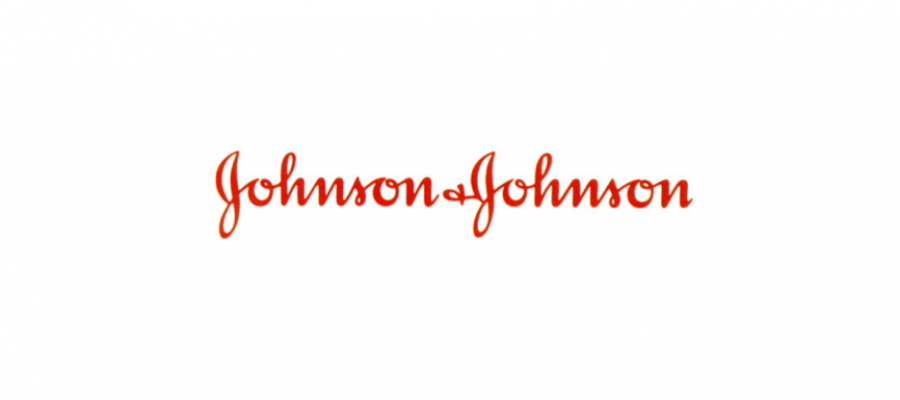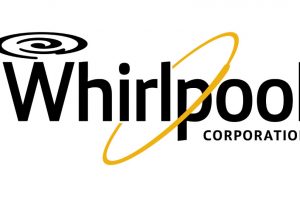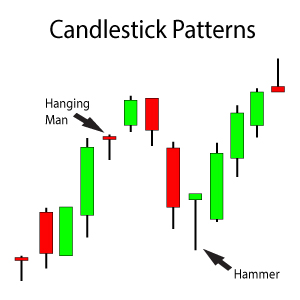Johnson & Johnson (JNJ) Stock Chart Analysis
 This article is a Johnson & Johnson (JNJ) stock chart review and analysis. The brands that fall under Johnson & Johnson are extensive. I recommend visiting the official Johnson & Johnson (JNJ) website.
This article is a Johnson & Johnson (JNJ) stock chart review and analysis. The brands that fall under Johnson & Johnson are extensive. I recommend visiting the official Johnson & Johnson (JNJ) website.
Whether its baby powder or band-aids, Johnson & Johnson has several spaces occupied in my bathroom pantry. Neosporin seems to be another item under Johnson & Johnson’s umbrella of products and goods.
But baby products are the company’s cash cow. After all, the population just seems to increase, not decrease. More and more babies means more and more profits…
I remember as a teenager oiling up with Johnson’s baby oil before going to the beach. I was already pretty tanned from working outside in the summertime, but the added oil still caused me to get burnt. I learned a valuable lesson that day and was glad to not damage my skin other than the temporary burn. The stupid things we do when we are teenagers.
So is Johnson & Johnson’s (JNJ) share price going to cause investors to get burnt? Or will it be a temporary burn? JNJ just reported earnings on April 18, 2017 before the market opened. The initial reaction was a Falling Window candlestick pattern that can be seen on JNJ’s daily chart below. A Falling Window candlestick pattern is also known as a gap-down. This gap-down will provide resistance on any subsequent rebound attempts.
Let’s review some charts that should cause shorter-term investors that are long to get nervous.
JNJ – Long-Term Analysis
This first chart is a 20 year monthly candlestick stock chart. From a longer-term perspective, JNJ’s share price developed 2 different bearish reversal candlestick patterns that have resistance areas in the same general price area, a Bearish Engulfing candlestick pattern and a Shooting Star candlestick pattern.
JNJ’s share price developed a Bearish Engulfing candlestick pattern in August 2016 with a high of $125.90; this price level represents the resistance area from the Bearish Engulfing candlestick pattern.
A Shooting Star candlestick pattern then developed in March 2017. While it did move higher than the $125.90 resistance area from the Bearish Engulfing candlestick pattern, it closed below the resistance area by the end of the month.
Longer-term, JNJ’s share price appears poised to[s2If !current_user_can(access_s2member_level1)]…….
If you want to continue reading this Johnson & Johnson (JNJ) stock chart review and analysis, you must first login.
I review the trade set-ups for the $110 and $95 price levels. Trade set-ups at these levels are based on the bearish reversal candlestick patterns noted above. If you want to learn about properly trading these bearish candlesticks, join Trendy Stock Charts today and access the members only area where I discuss trading techniques for each candlestick pattern.
If you are not a Trendy Stock Charts member, consider joining today! There are several different subscription plans available.[/s2If][s2If current_user_can(access_s2member_level1)] pullback to the $110 price area at a minimum. The secondary support level is the $95 price level. If JNJ’s share price is in the process of correcting its multi-year uptrend, which it could be by the signals from the bearish candlesticks, then the $95 price level is the most likely support area for earnings pullbacks over the next couple of quarters.
But before JNJ’s share price can get to the $95 price level, I would anticipate an initial rebound from the upper support level around $110 unless earnings are a total mess and the outlook is not good.
Using a long-term strategy, an initial purchase to go long would be made around the $110 price level and traded upwards. If the market continues to pullback after the purchase at the $110 price level, make a secondary scale-in purchase around the $95 price level. The third and final purchase should be saved until the rebound is full-blown and confirmed in process.
If JNJ’s share price rebounds from the $110 area with strong buying volume, make another scale-in purchase as JNJ’s share price is going to close above the resistance areas from the bearish reversal candlestick patterns.
Now let’s review some shorter-term charts.
JNJ – Short-Term Analysis
Let’s review a short-term Johnson & Johnson (JNJ) stock chart. This next chart is a 1 year daily candlestick chart for JNJ with moving averages overlaid on the chart. The Falling Window candlestick pattern (gap-down) on heavy selling volume is going to represent some stiff resistance. If shares for JNJ are purchased lower and traded on its rebound, be certain to sell shares on its first visit back to the resistance area from the Falling Window candlestick.
The $117.73 area is slightly below the 200 Day moving average and also would represent a 61.8% pullback of the uptrend. The 61.8% pullback was calculated using the Fibonacci Retracement Tool. Any successful rebound for JNJ’s share price will happen no lower than the 61.8% Retracement Line. Any pullback that continues lower than $117 should warrant patience rather than a scale-in entry.
Anyone long now should consider trimming a few shares and locking in gains at current prices up to the $124 level on a rebound and then look to repurchase those shares on an approximate 5% pullback. If the short-term trading is not your thing, just look to make an initial scale in purchase around $118 and then wait several days before making another transaction. Let’s review how the trade set-up appears on a weekly chart for JNJ.
JNJ – Upside Price Potential
This last Johnson & Johnson (JNJ) stock chart is a 3 year weekly candlestick chart to review any medium-term trade set-ups over the next couple to several months. There are 2 Fibonacci Extension Tools overlaid on the chart. The black one is a longer-term look at the uptrend’s Golden Ratio while the green tool is a shorter-term perspective.

Analyzing a Weekly Candlestick Stock Chart for Johnson & Johnson (JNJ) and Calculating Upside Price Targets Using Fibonacci Extension Tools
There is a confluence of Target Lines in the $132 price area. A purchase in the $110 price area would have a $22 upside potential and $17 downside risk. Not really the best ratio. But if clear reversal and support signs are seen in the $116-$118 price area, an aggressive and risky entry can be made to play the potential rebound back to the $132 area. There is a chance this purchase is premature, so be sure to sell shares fast at any signs of weakness or increased selling pressure.
But longer-term, JNJ has not reached the Golden Ratio from its longer-term uptrend (the 161.8% Target Line from the black Fibonacci Extension Tool). This causes me to think that the $132 remains as a viable upside price target in the long-term. Looking to get in at the lowest price during the current pullback will help to maximize any upside potential.
Johnson & Johnson (JNJ) Stock Chart Summary
Johnson & Johnson (JNJ) appears poised to pullback. How far is the pullback? The depth of the pullback will actually help to predict future prices months out. Look for initial support around the $110 price level. If the $110 price level does not hold, the next major support level down is the $95 price area. These are support levels where long-term investors need to be making scale-in purchases if MSFT’s share price activity agrees.
The 2 longer-term bearish reversal candlestick patterns indicate a possible Wave C in process for JNJ’s share price. Wave C’s can sometimes be very painful with very few bounces to escape out of the trade.
When JNJ’s share price is finally rebounding, a break to new highs by its share price on heavy buying volume is another scale-in purchase opportunity. That new high on increased buying volume is a signal to a breakout and a new uptrend in progress.
So apply some sunscreen (patience) and avoid getting burned by JNJ’s share price. Try using SPF $110 and SPF $95 to protect yourself from the burns. If you get any blisters from the $110 area, throw a band-aid over it and wait until $95 and then re-apply.
Ask away with any questions below or in the Idea Chamber. Good luck trading!
[/s2If]
















Ask a Question. Make a Comment. Leave a Reply.